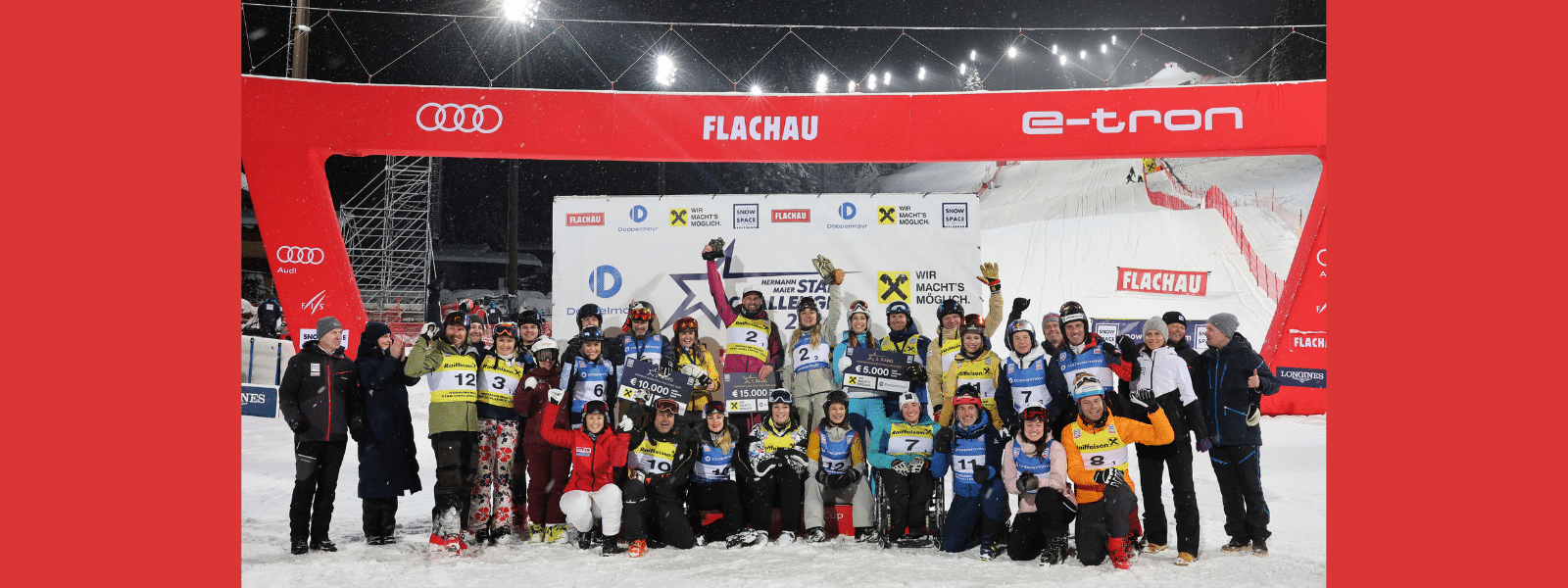The Workout that Paid Off for Lila Lapanja
Every day like clockwork, there she was — riding the cardio bike and stretching her body to regain mobility, looking for a way to ease her pain.
It’s a lonely atmosphere mid-winter at the USSA Center of Excellence in Park City, Utah. Most athletes are off globetrotting the world tour.
So back home, the days were filled with sweat and punctuated by tears.
Yet every morning, she walked onto the training room floor, a big smile on her face, ready for work. Her friends were long gone. Ahead of her were hundreds of hours of work to get her ailing body ready to go back on snow. Her fast rise to the top was past history — sixth in Junior Worlds, U.S. Championships bronze, a NorAm title. The spot she earned to ski on the Audi FIS Ski World Cup seemed like an impossible dream to achieve.
But on Jan. 12, under a floodlit run in Flachau, Austria, American Lila Lapanja saw the light at the end of the tunnel. And it burned bright — a top-30, points-scoring finish in only her third World Cup.
In a way, catastrophic injuries such as blown knees are easy. There’s a defined diagnosis, surgical procedure and rehabilitation program. Lila, 21, describes her own injury as complex, yet simple. Complex in that no one could really identify the source of her pain. Simple in that she ultimately realized that rest and time off from ski racing could work wonders.
The daughter of a Slovenian ski racer, Lapanja grew up racing on Diamond Peak outside Reno, where her father, Vojko Lapanja, was the coach. She hopscotched between Tahoe and her family’s home in Slovenia, learning the skills and culture of a ski racer.
After a breakout season in 2014, the winter of 2015 provided plenty of dark days for Lila Lapanja. Her U.S. Ski Team trainer, Tracy Fober, was her shining light. Day after day they tried to figure it all out together.
“I started a new training program that focused on fundamental movements,” said Lapanja. “Since I knew I wouldn’t be lifting heavy weight or training at a high intensity, I spent twice as much time in the gym than usual doing ‘easy’ workouts.”
Lila Lapanja hit the gym to hit her first World Cup points after injuring her back. Paul Richter photo.
Days turned into weeks, weeks turned into months. Life at the Center of Excellence became a test of perseverance. Lila was rewarded with a spot on the World Championship team. But it wasn’t time yet.
“My biggest motivation was the feeling I had making my decision not to race after World Champs,” she said. “I realized then how much I loved ski racing. I missed the energy, the travel and the feeling of constant athletic pursuit. I had plenty of moments of uncertainty. But when I was ready to come back, I was full of optimism and devotion. I still have a lot to learn, but I’m incredibly happy with what I have accomplished since making that tough decision a year ago.”
It was late afternoon in Flachau. Thousands of fans had gathered in the village. It was a very special night. Her mom was there, as were her grandparents from Slovenia. It was a night of emotion and a time to put the past behind.
Wearing bib No. 37 in only her third World Cup start, Lapanja kept her cool and came across into 22nd position — a far cry from her debut runs in Aspen six weeks earlier. As she planted her poles for run two, she knew what was at stake. For the next 56 seconds, her focus was intense. She finished 23rd – her first points!
“The significance of a top-30 World Cup result is ineffable,” she said. “After the second run, I became fully addicted to ski racing again. I was back, and I want to stay that way. I’m hungry to learn more and ski faster. And now it’s time to work really hard again!”

Lapanja celebrates with Paul Moltzan. U.S. Ski Team photo.
The night was more than just another World Cup. It was validation for the hard decisions she had made in sitting out the 2015 season.
“I was nearly in tears thinking of how far I’ve come,” she said, pausing to think about how she got to this place in Austria on this particular night and those who helped her get there. “I gave myself a moment to honor my commitment, to honor the challenges and to honor the people who support me unconditionally.”






















